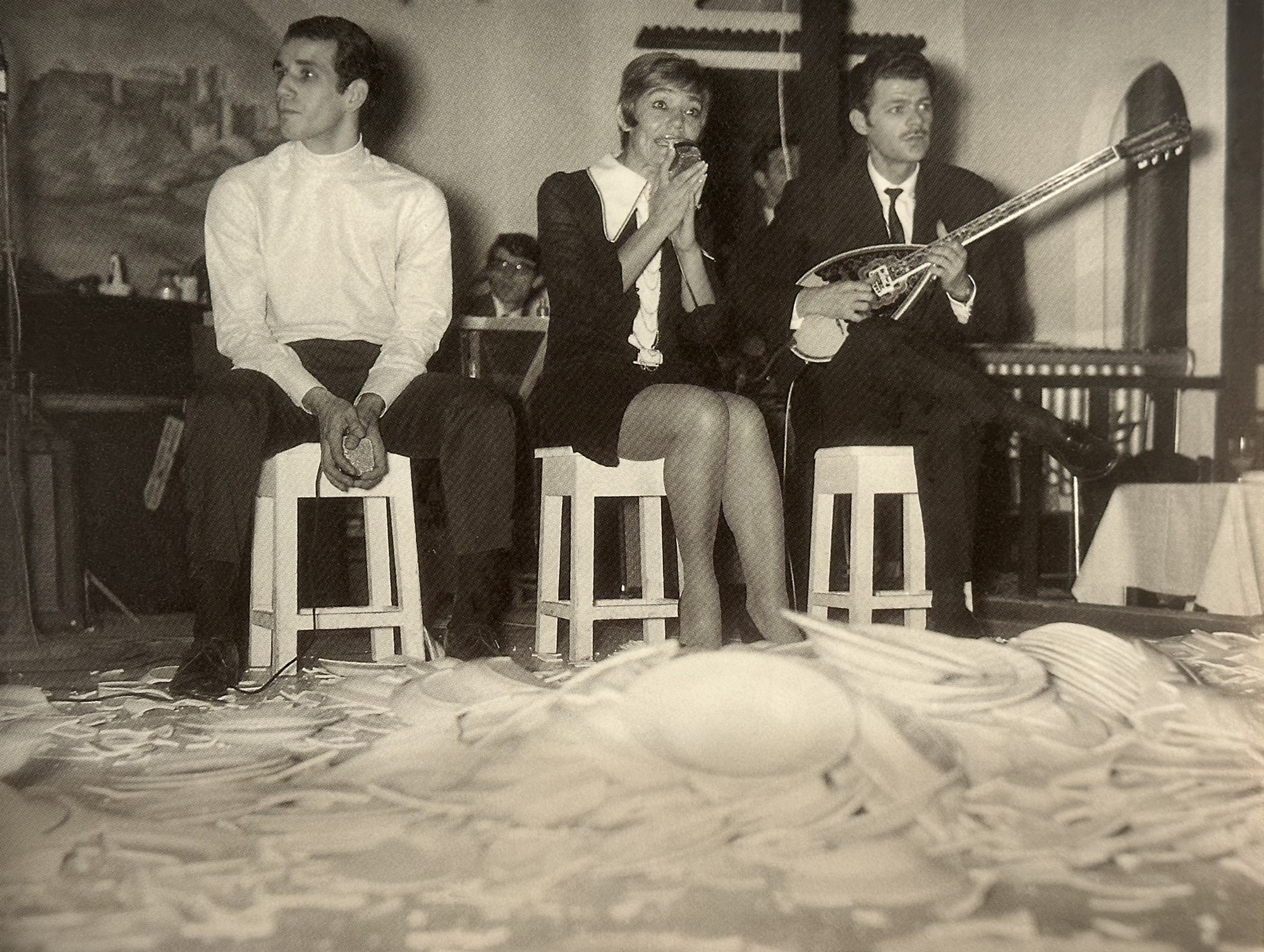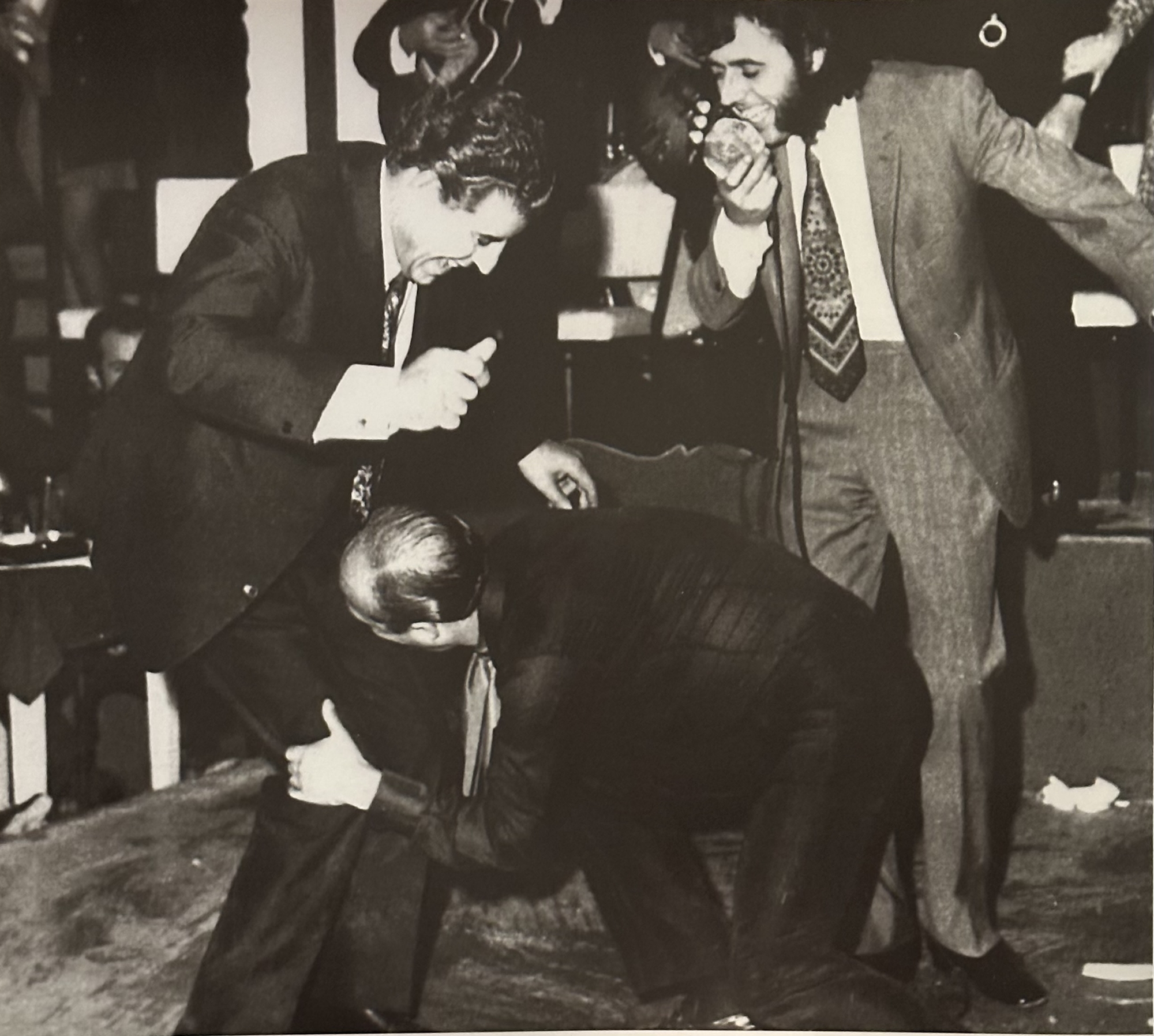
“Why are you bothering us with your cell phone, sir? Mercy!” shouted an indignant audience one night during a performance of Romeo and Juliet at the National Theatre. In Cherubini’s Medea, on the lyric stage, the audience in the front rows photographed David McVicar’s impressive set design, distracting the others from the climax of Anna Pirozzi’s performance. performance of “Madama Butterfly” in the Concert Hall, the spectator apologized for having opened a whole sign: “But I look at the metro timetable”. Today, you will agree, few people are upset because of the proposal to “turn off the mobile phone”. The spectator who makes the observation feels awkward!
At the last performance of Gogol’s The Gamblers at the Kivotos Theatre, which was crowded for two seasons, the audience was not at all the same as the audience of the first season. The screens were packed and some were eating popcorn. The viewer dared to notice the person next to her, whom she interfered with with her mobile phone. Answer: “Don’t look at him if he bothers you.”
In small spaces, and especially in monologues, every noise is amplified. Even more so when you hear a strange ringing tone, like one evening in The Touring Car with Orphea Augustidis at the Vassilakou Theatre.
And all this happens not only in theaters. Here’s something in common in the theatre, on stage and in concert: the mobile phone! Today, admiration for an artist, and even narcissism, is expressed through the user’s self-presentation in social networks, “publication”. “It’s a kind of self-glorification,” as Foivos Delivorias aptly said.

Balloons and knives
Exaggeration, and even rudeness in front of the artist, manifests itself in different ways over the decades. In the centers, but also in the theater. Changes in our social behavior are more pronounced in the nightlife. No more attachment to the artist. The recently deceased Yannis Vogiatzis told me in 2014: “I watched on TV how they threw a table on the dance floor, which Remos sang. In my day, if I liked them, they would send a bunch of postcards to the dressing room. Then came the fashion for gardenias and beating plates. You were asked: “How many plates does Voyatsis break?” The plate meant the client. Next was the wiry-eyed carnation. Now they’ve turned things up a notch in entertainment. As soon as you run away from the carnation, you will find it from the table.” As the display increases, respect decreases. And vice versa. After all, there are fewer and fewer great artists who commanded their attitude and the attitude of the public.
Balancing group fun and selfish display has never been easy. One day, a drunken visitor threw a glass and severed an artery in Sotiria Bellow’s leg. The singer was taken to the hospital and has been banned from breaking down ever since. “A wild look, a conversation and everything,” notes Sofia Adamidou (“When you are delighted, when you are excited”, approx. Angelaki). Dishes arrived later. Sotiria came out to sing after they cleaned the dance floor for the first time. — That meant the dishes had been washed.
Giorgos Zampetas, a great songwriter and showman, as noted by Lefteris Papadopoulos, gave his own show. On such evenings, many opened. Like Charalambopoulos, “the leader of the club,” as the composer called him. He wanted to dance alone and “brought pounds and crowns with him and handed them out. He also gave away pearls in bulk, so my pearls.”
The song “Johnny the Puppeteer”, as the composer’s daughter Katerina Zambeta says (“I’ll Fall Deep in the Sea”, published by Ankara), was written for patrons like him. “But since he was not a real gentleman in the distribution of pearls, he paid the waiters to discreetly pick them up and return them to him. (…) Once his father joked. “Big man, tonight everything that you have left will remain in the orchestra and the singer,” he threw to him, starting the numbers. On another occasion, however, “Johnny,” the Duchess said, cut Kate Abawi’s maxi dress with scissors while she sang. You see, he liked minis. But Juntic’s aesthetic has also left its mark. Once Tolis Voskopoulos had his hair cut while he was singing to make a talisman out of it.
Not only money has always left the “strong wallets” of musicians and singers. On another occasion, they threw balloons, which was certainly a more painless habit than the 1948-1950 glass-breaking bouzouki. In the past, withdrawal, as Zambetas said, “was an insult.”
“No” to Onassis
Some offered money. Among them is Aristotle Onassis. However, according to her to Jasonas Triantafillidis (The Instruments Played, ed. Ammos), Maya Melaya refused, saying: “If you want to give me a present, send me flowers or something. I don’t take money.”
Admiration for the artist is expressed through the user’s self-presentation in social networks. “Something like self-glorification,” Phoebus Delivorias said.
If online subscribers matter today, in the past, success and recognition were measured by drinking champagne. Some of the bands that went to the centers showed financial comfort with cases of cheap champagne that they sent to the dance floor. Others had waiters pour whiskey on the dance floor and light it up to dance.
Selfies didn’t exist back then, but everyone wanted photos. One day, a group of Greek-Americans went into a restaurant where Tsitsanis was singing and asked the waiters to take pictures with them and have a drink when he arrived. However, when Tsitsanis arrived, the group did not recognize him. He was annoyed by rudeness, but the customer was deliberately gallant. He knelt at his feet while he performed on stage, pulling wads of thousands from his pocket.

Chiotis in… a helmet
Broken dishes left their marks. Due to the many cuts on her legs, the Duchess began to wear Marinella’s boots and trousers. Manolis Chiotis often went to listen to Zambeta and have fun. One night in 1963 he went to the Triana Heila wearing a German helmet! “He wore it so as not to eat the table on his head,” Zambetas told Ioane Kläsiu (“And the noose saw … through and through”, approx. Defy).
In the mid-60s, Kazantzidis left the stage due to an incident in the center of Acharnon. As he told Vasilis Vasilikos (“I Exist” approx. Livani): the girl kicked the broken bottle and almost hit him in the face. He stopped singing, locked himself in his dressing room, and vowed never to sing in a nightclub again.
Artists were not always tolerant. One day, Marinella threw a chair at someone who rudely demanded to sing the same song over and over again with Kazantzidis. “I don’t even know how the fight stopped, how I was herded into the kitchen, how his brothers, who brought him to the store, chased me with some kind of kitchen knife.” (“The Tools Have Begun,” Ammos ed.).
While, according to Vicky Moxoliu, when they were having fun and having fun, some of the spectators threw their wedding rings and then tried to find them. Each era had its own.


Changes on the track
The 80s brought with it the democratization of the track. It was not just one group that had the right to dance, but everyone, since they could press and hurt the singer. And many others could now book their first table with compensation. Soon, unexpected socialist prosperity lay on the tables and kept the cellar of the former in the shops. With the song “Glenda ti zeoi” (“What do you care about the money, burn it whatever you want”), performed by Eleni Vitali, the PASOK party apparatus reveled when not dancing to “This man, he” by Rita Sakellariou and Imagine. “Tarahi”. There was money, and the audience seemed increasingly rough and jaded.
Decades later, some of the new public of the time flocked in other ways to the nightclub where Pantelidis, Paola, and others were. He expressed his admiration by throwing tables, chairs, champagne glasses, and cushions off the sofas onto the dance floor.
The mass destruction of the bouzouki, according to Dimitris Mitropanos in 2003, began in the 80s with dancing. “People came, the store was his, they wanted to dance, come on. I couldn’t fit on the dance floor to sing, I sat in the orchestra or walked in the back, and from the dressing room I sang (…) according to the principle “we have space, we dominate”.
Many years ago, one night at the Haram, where Ilias Andriopoulos was, Bellow started singing Don’t Cry when someone stood up to dance to her. “Sit down, captain, this is not dancing,” she told him sternly.
“I don’t care that they dance on the tables, I care about how they have fun,” said Marinella. Because “they have fun being in the public eye, showing each other.” Well, now they’re doing it on Instagram too…
Source: Kathimerini
Ashley Bailey is a talented author and journalist known for her writing on trending topics. Currently working at 247 news reel, she brings readers fresh perspectives on current issues. With her well-researched and thought-provoking articles, she captures the zeitgeist and stays ahead of the latest trends. Ashley’s writing is a must-read for anyone interested in staying up-to-date with the latest developments.